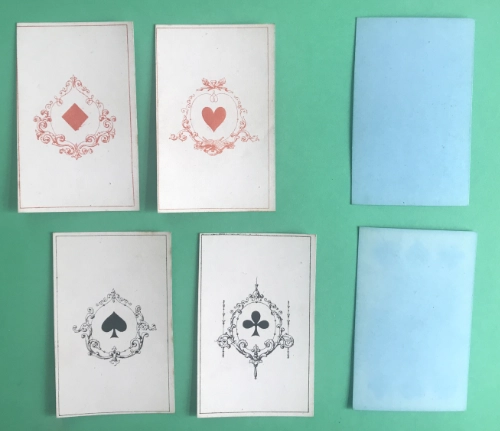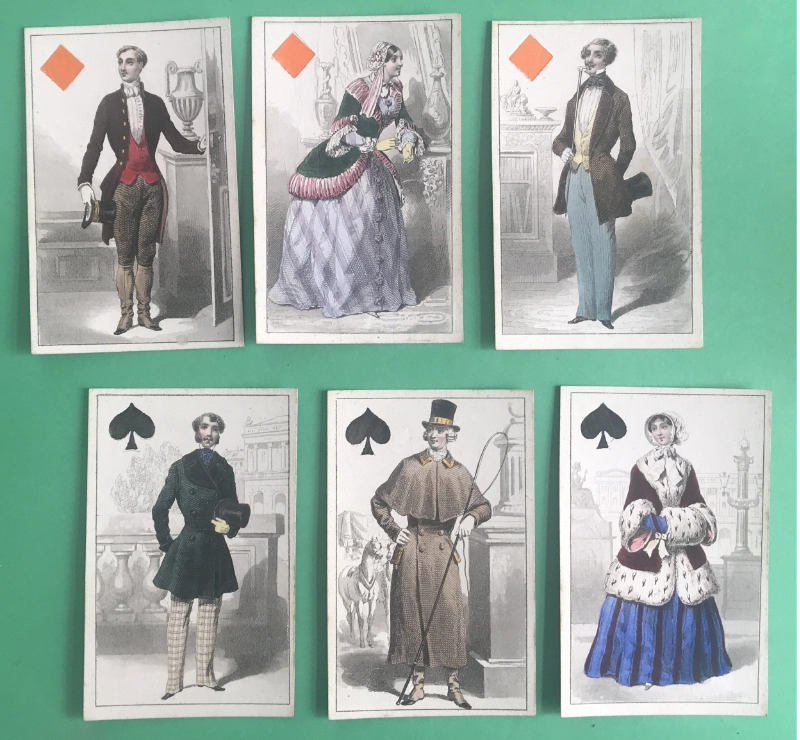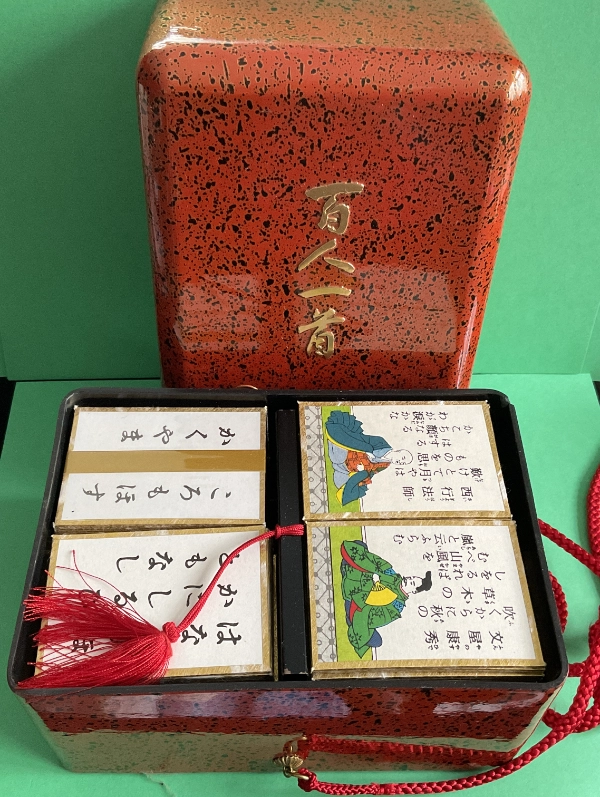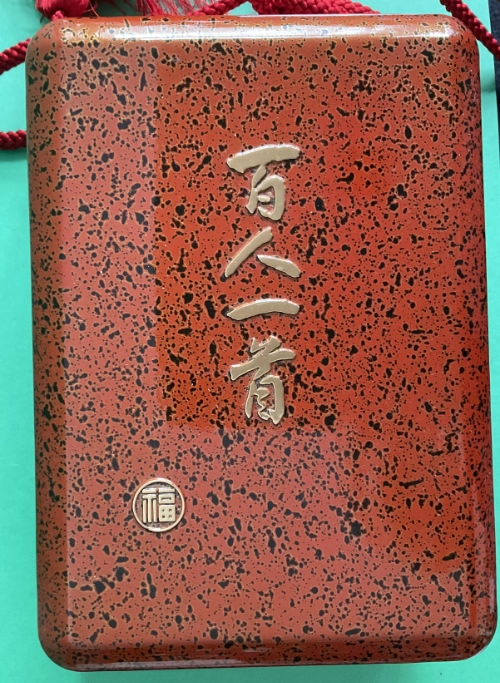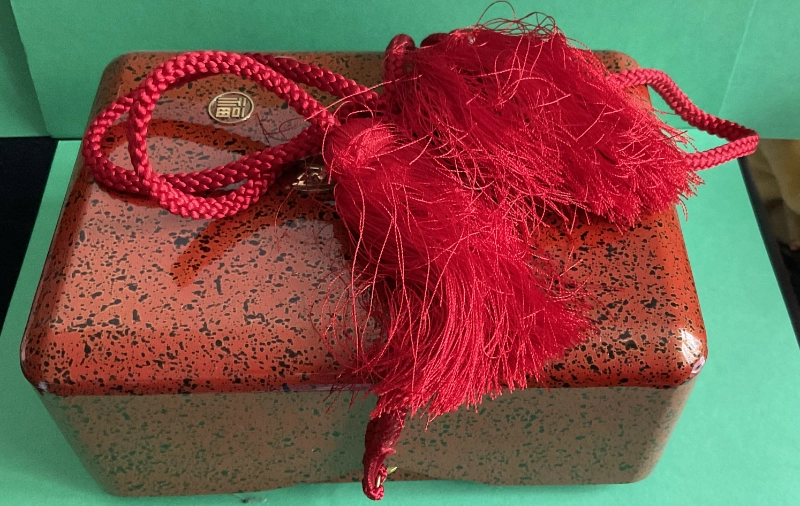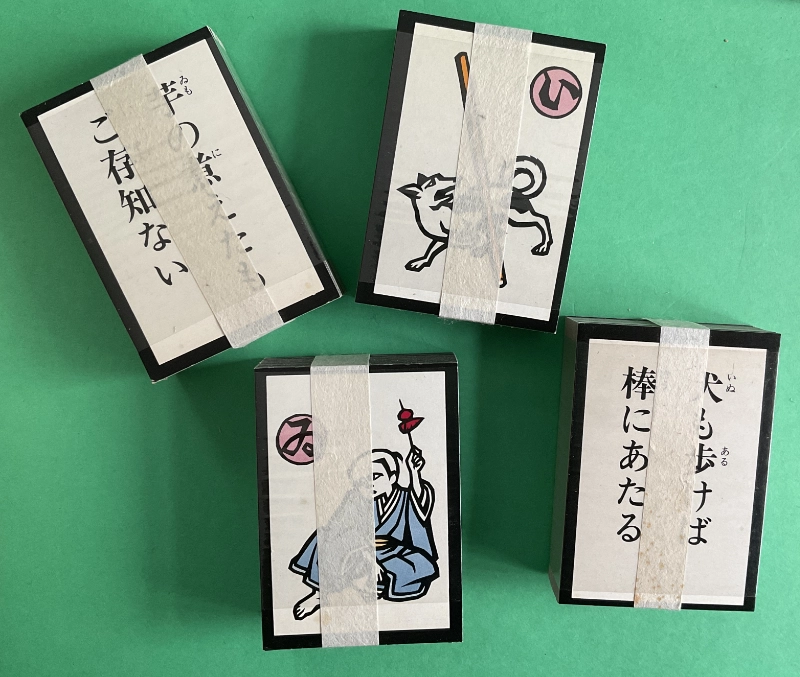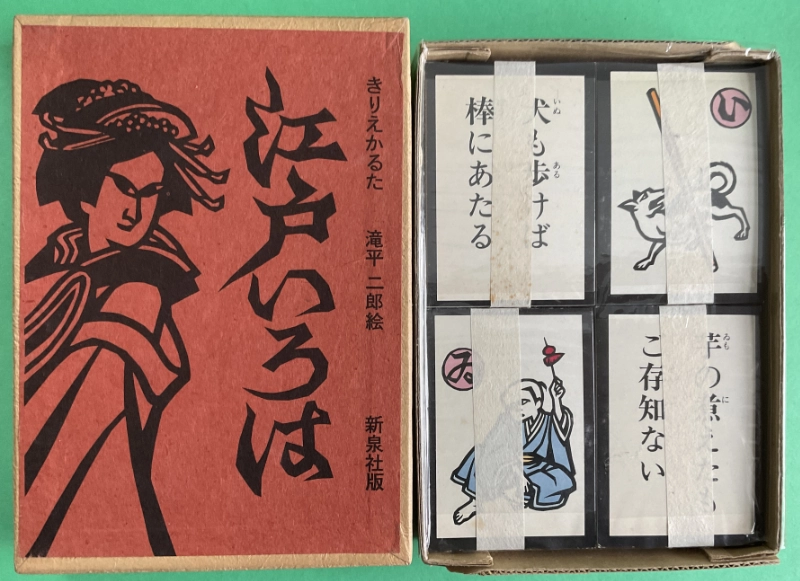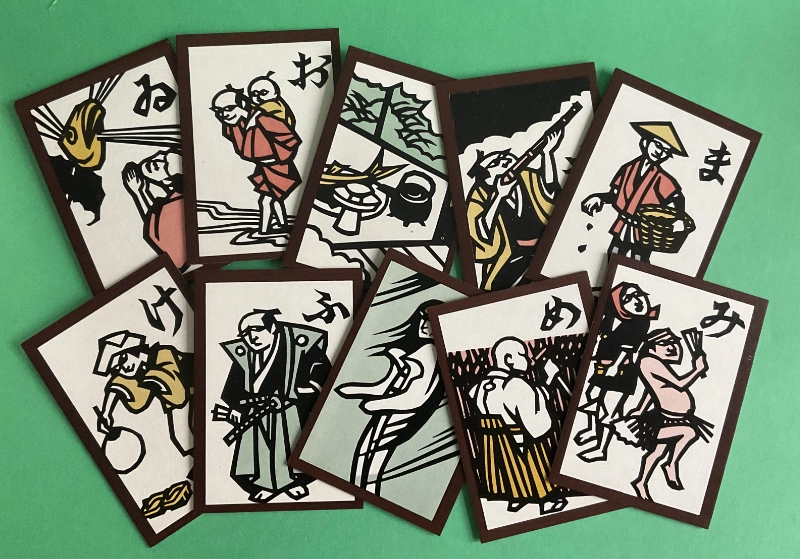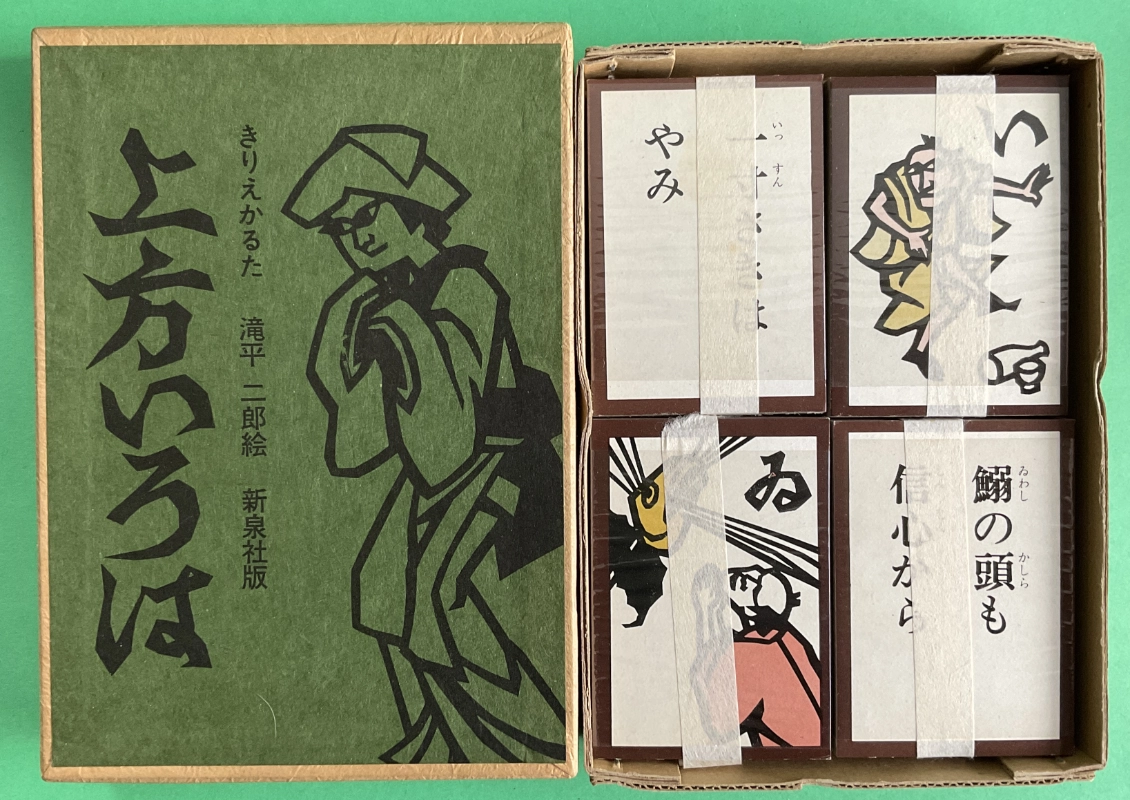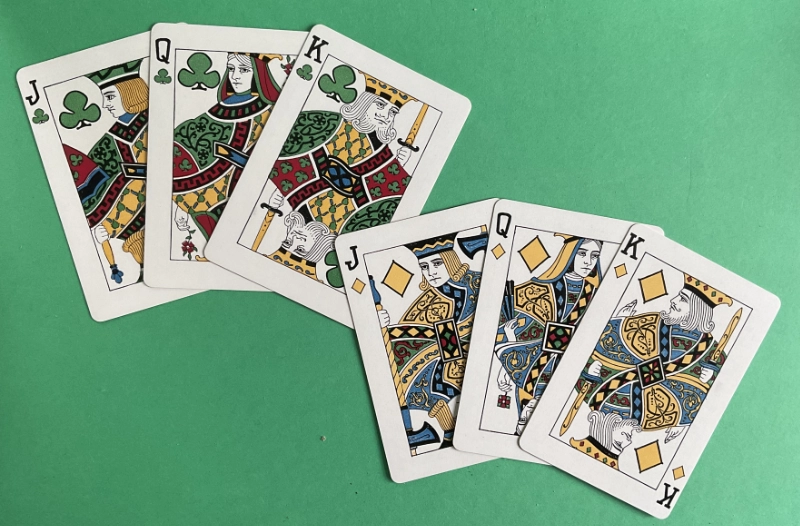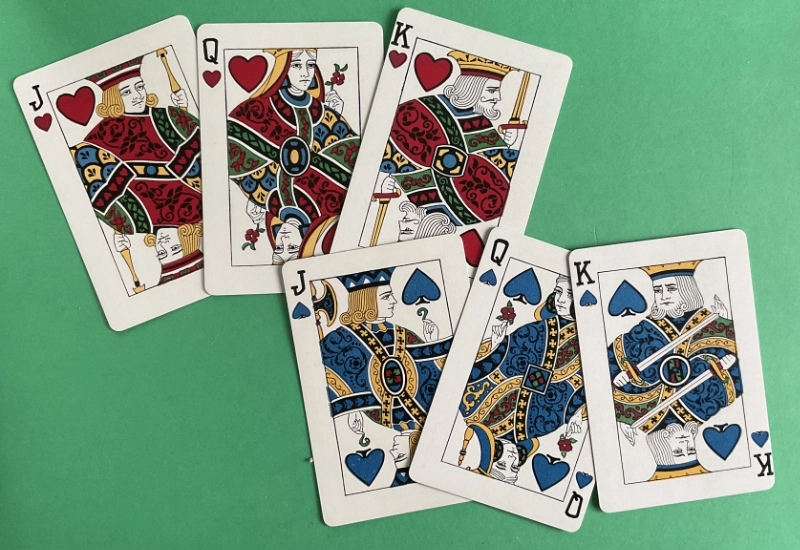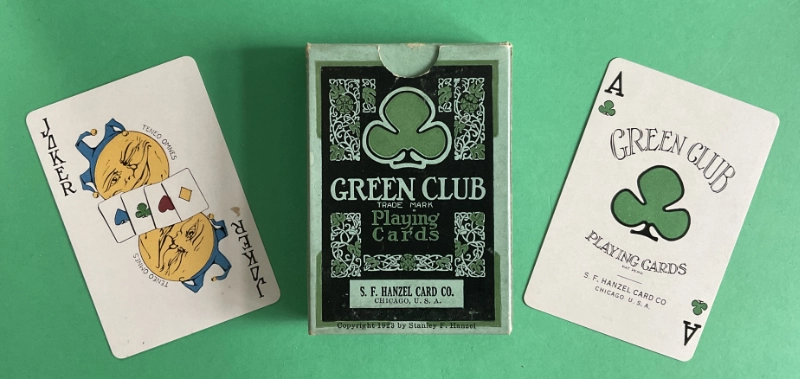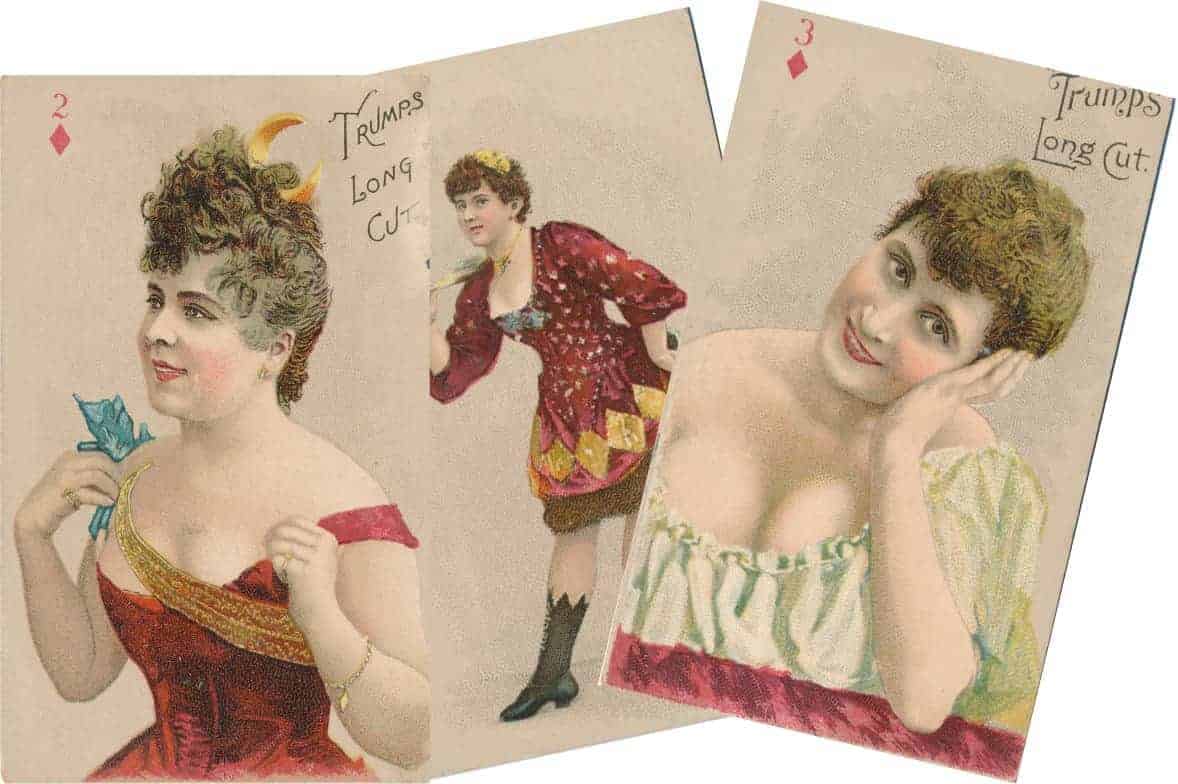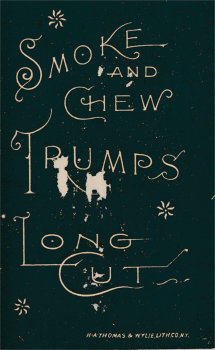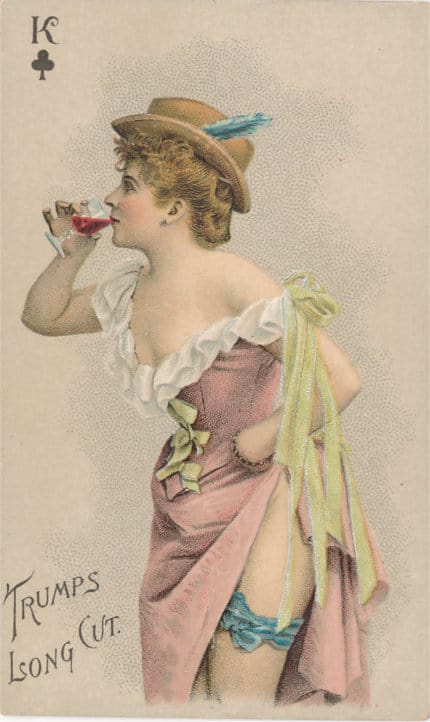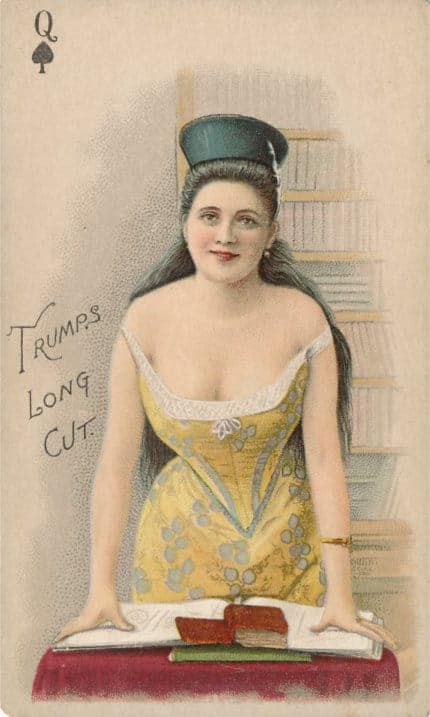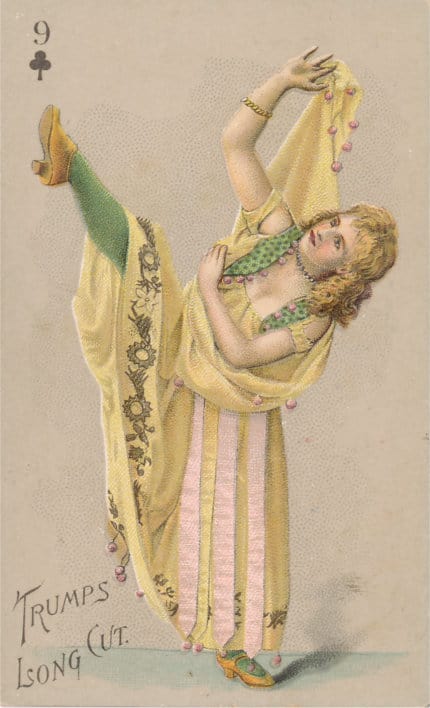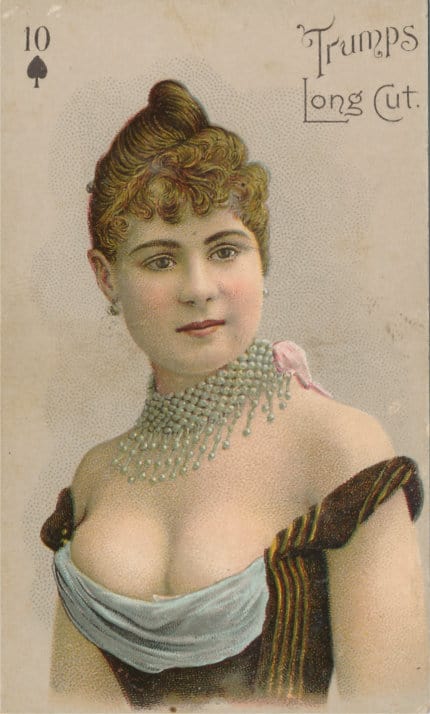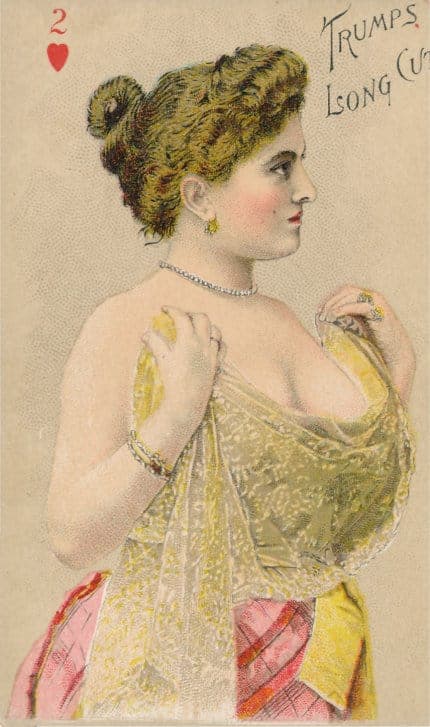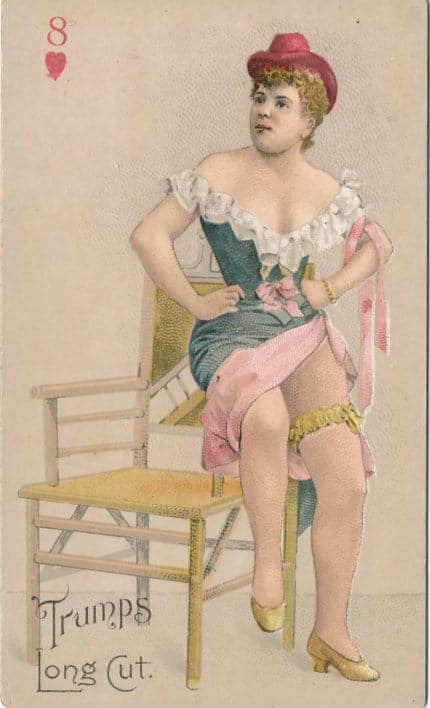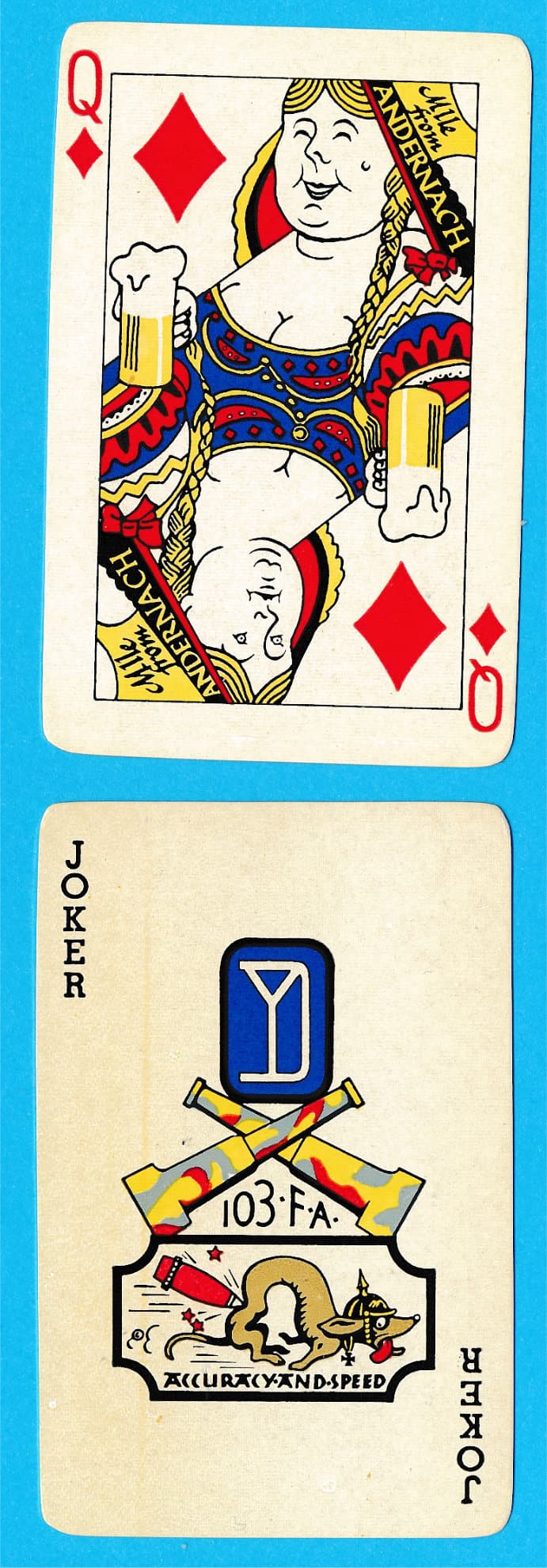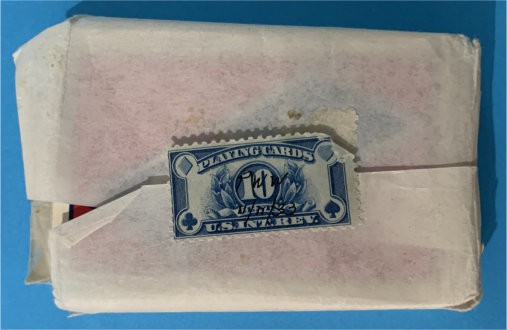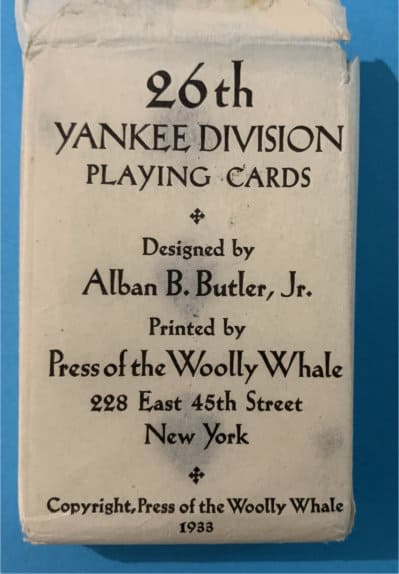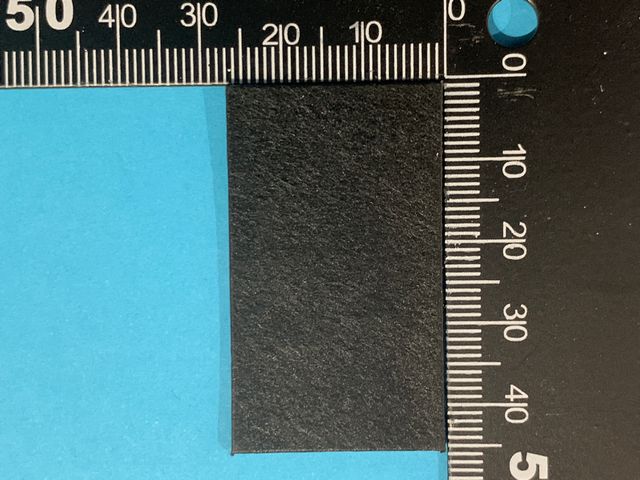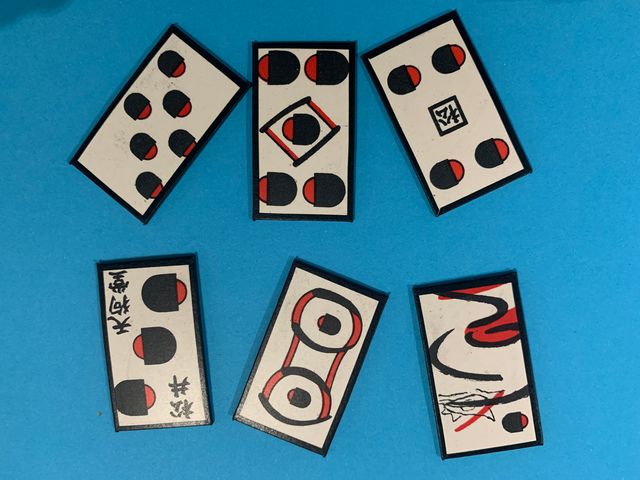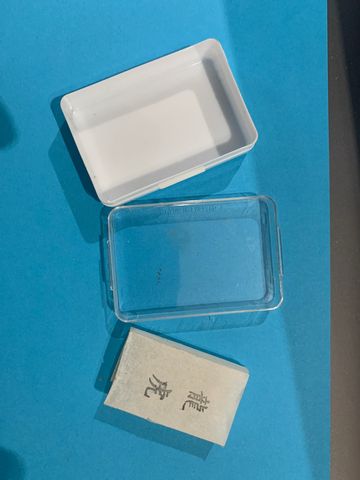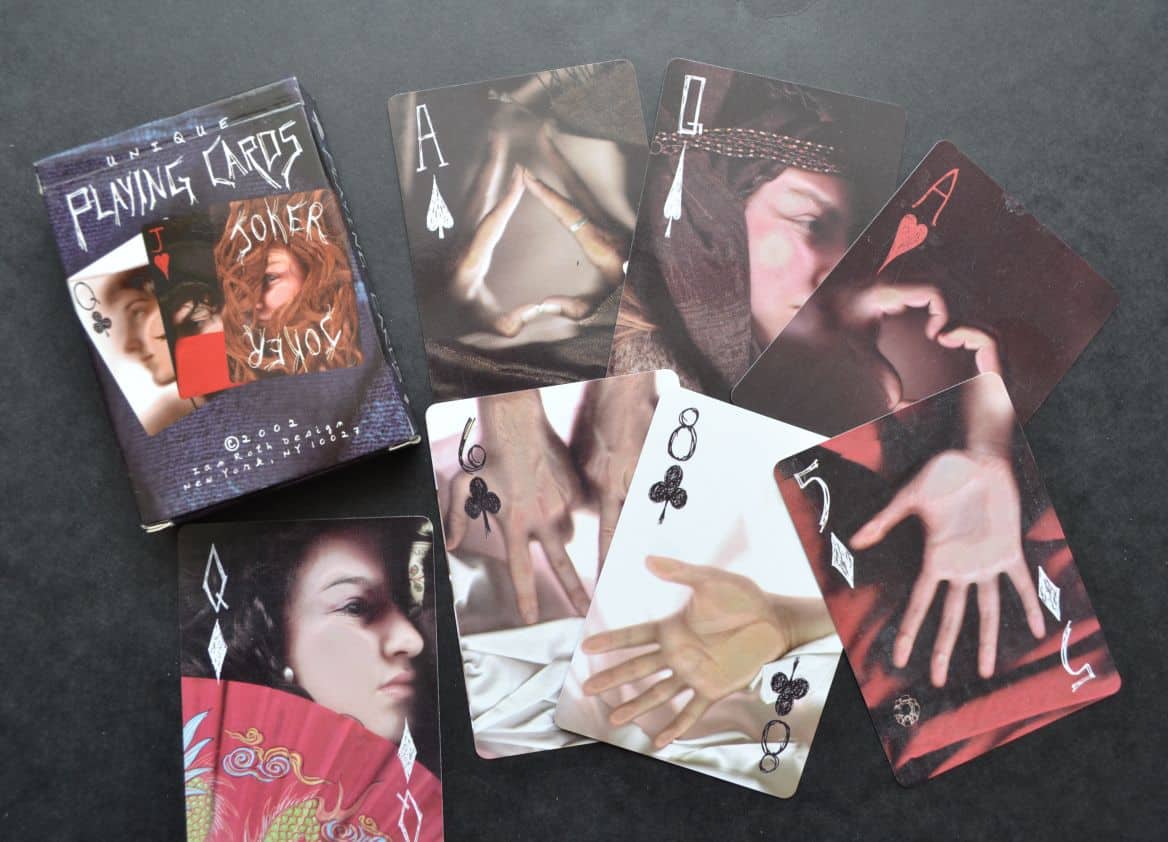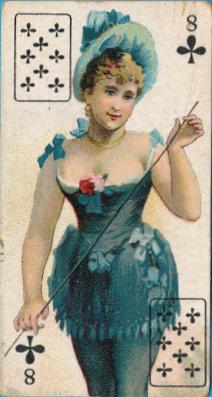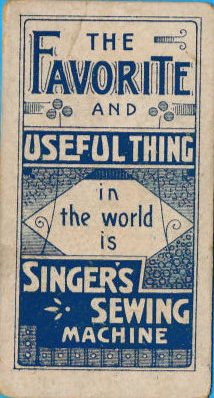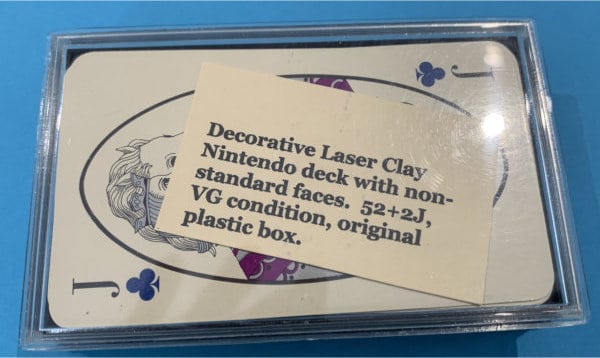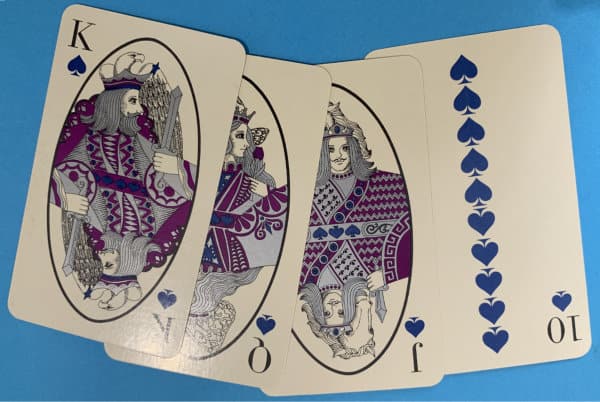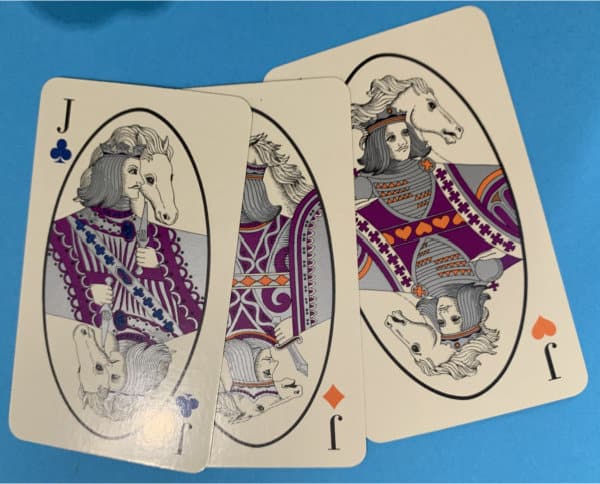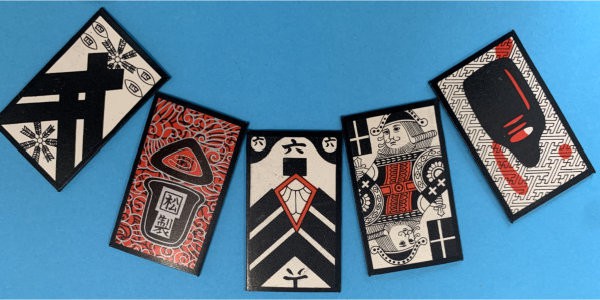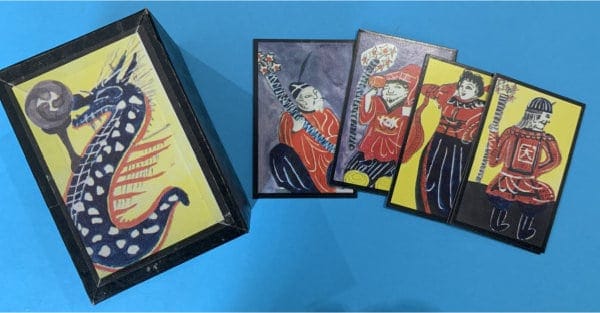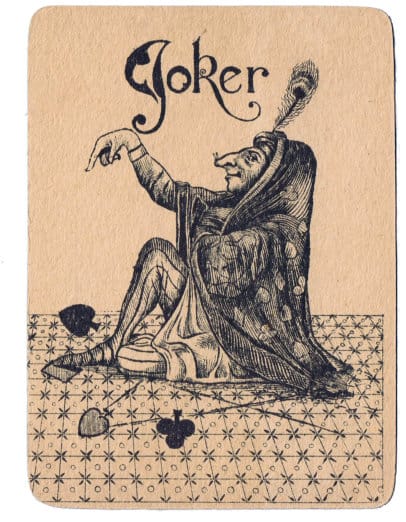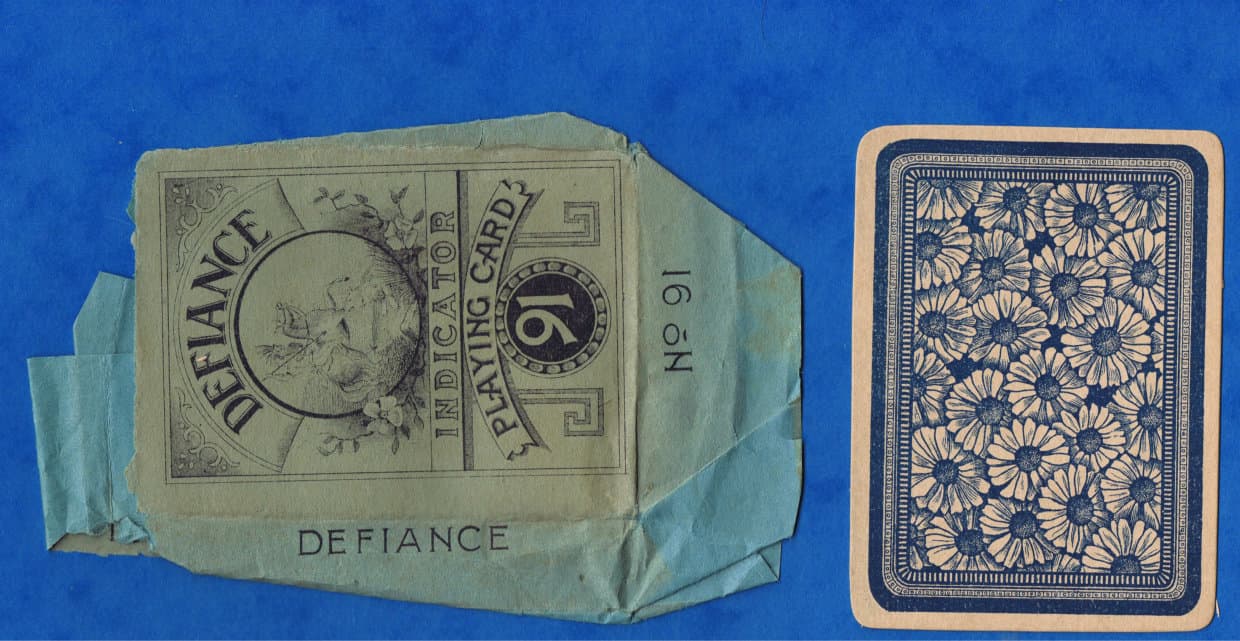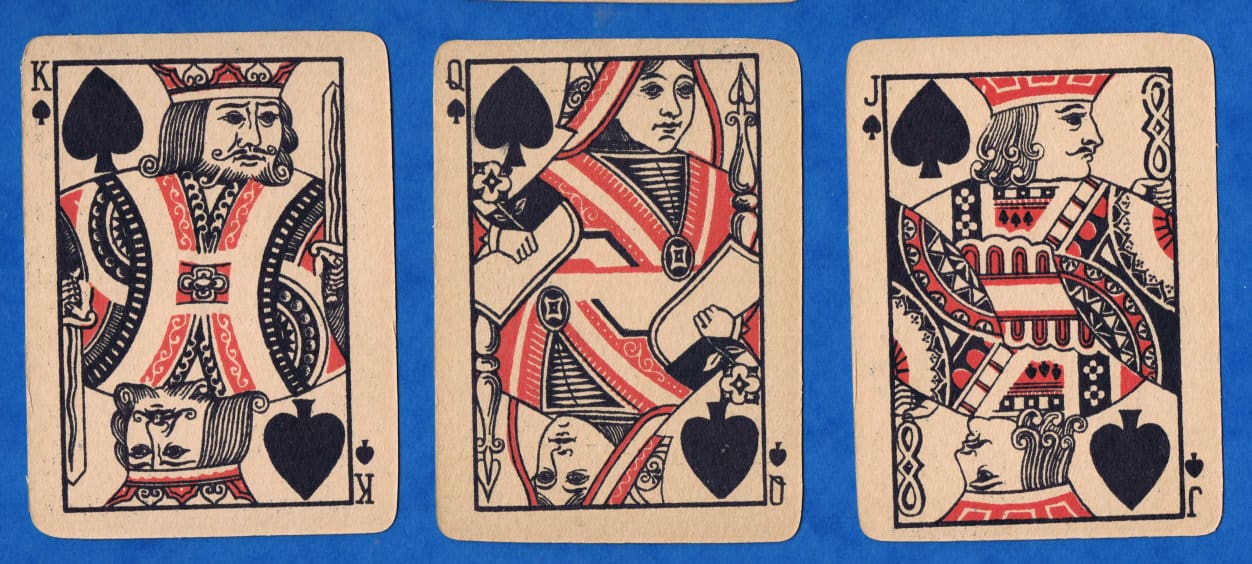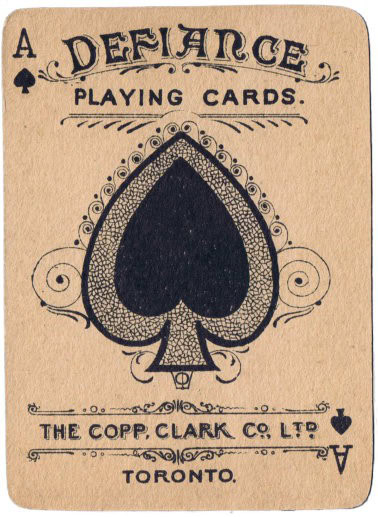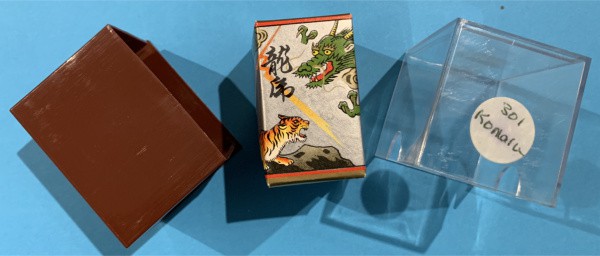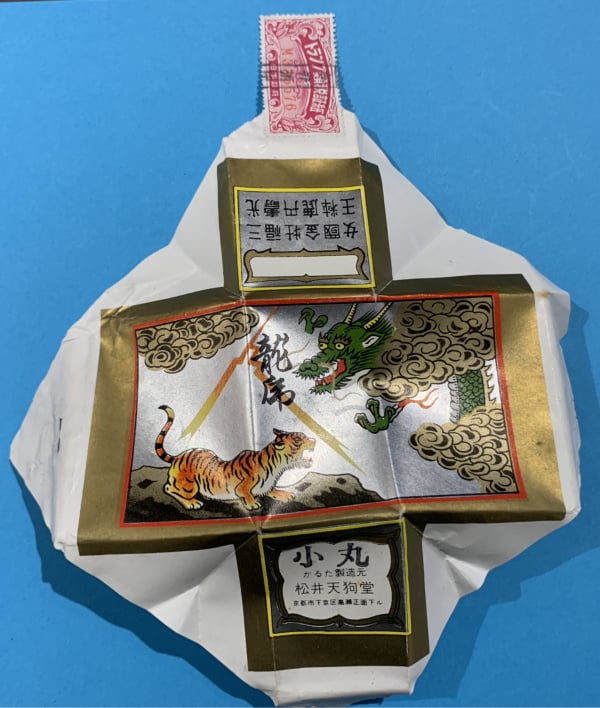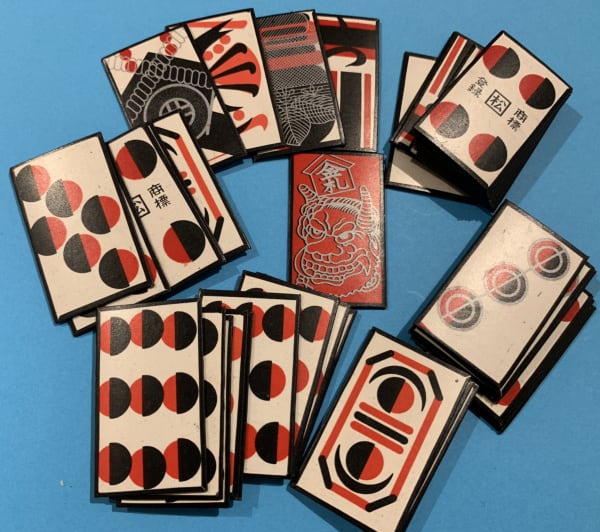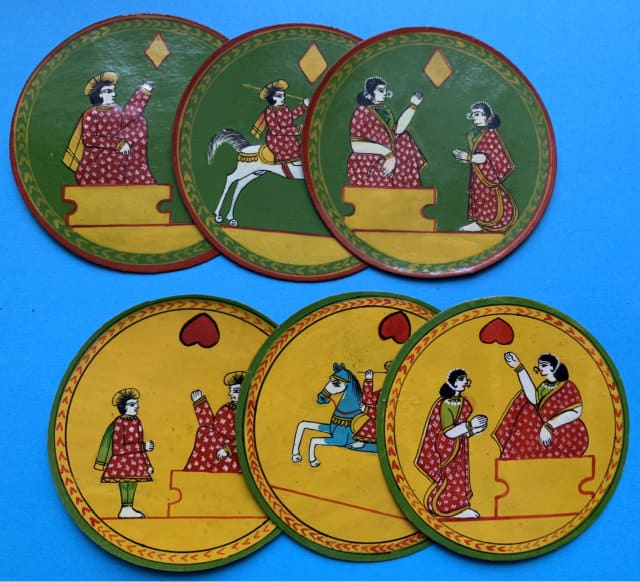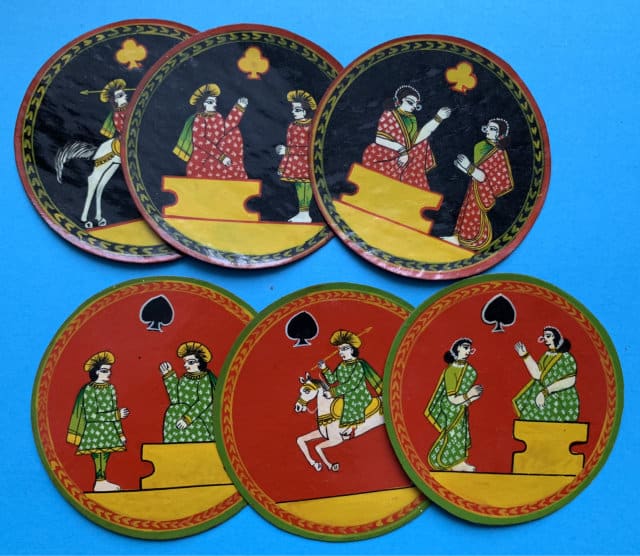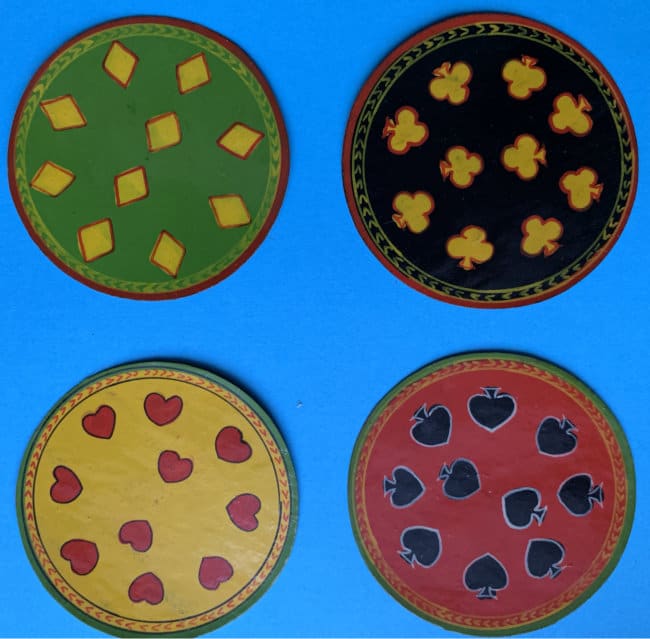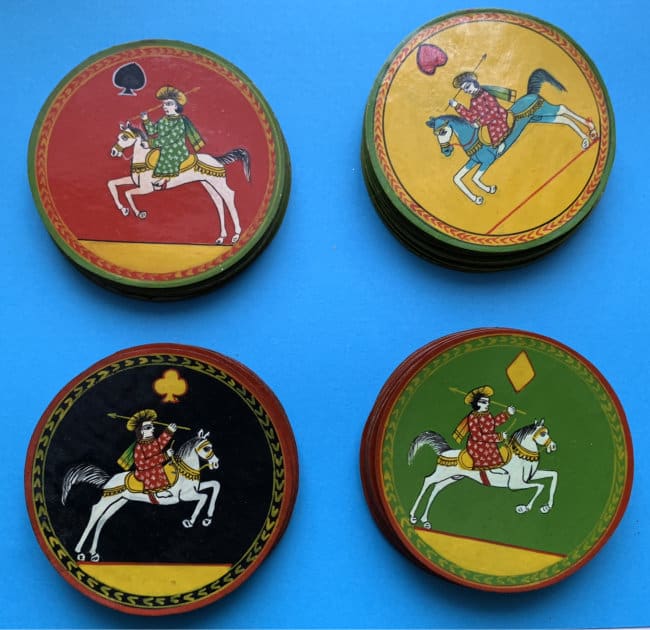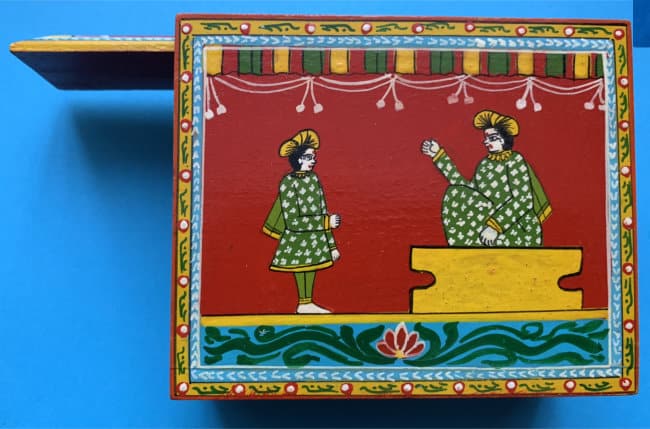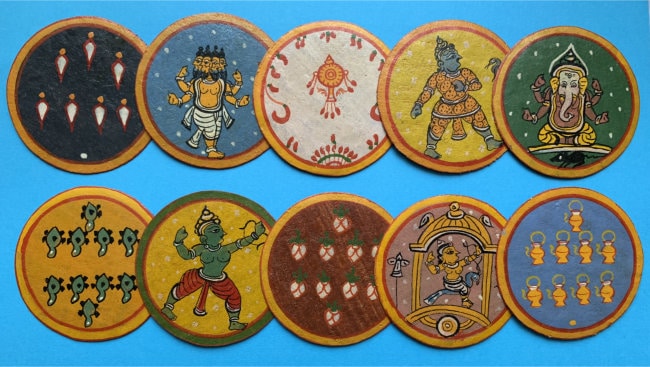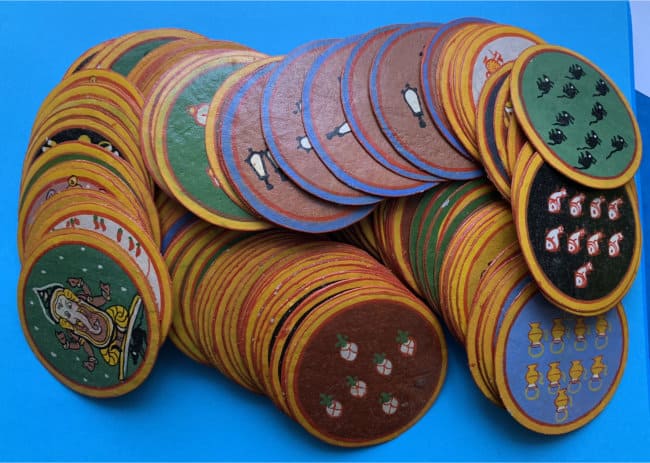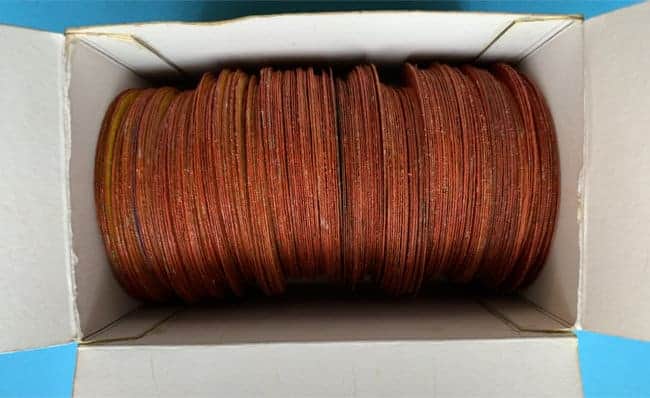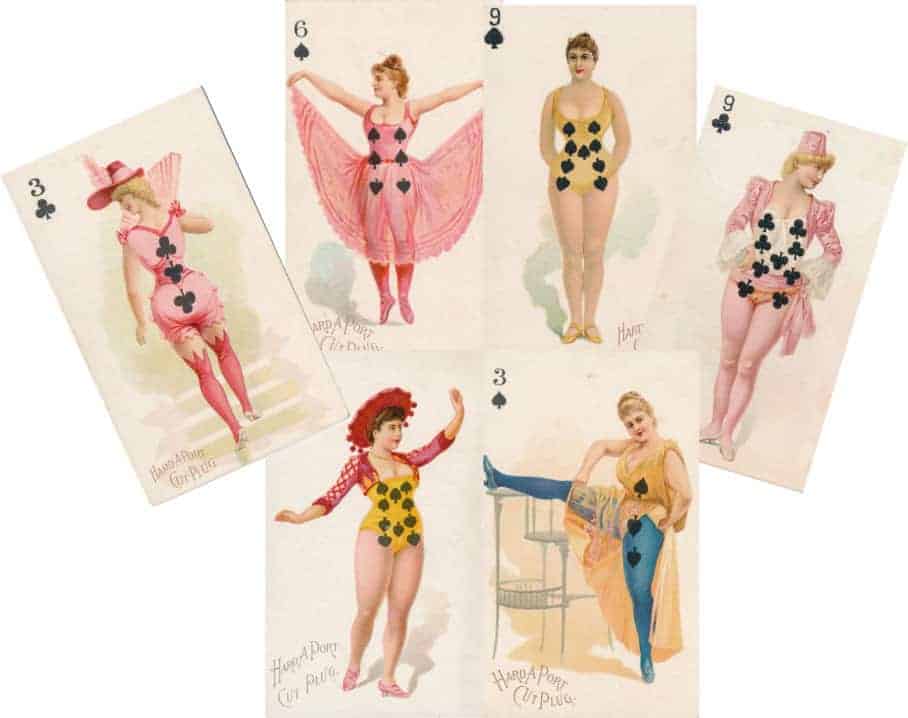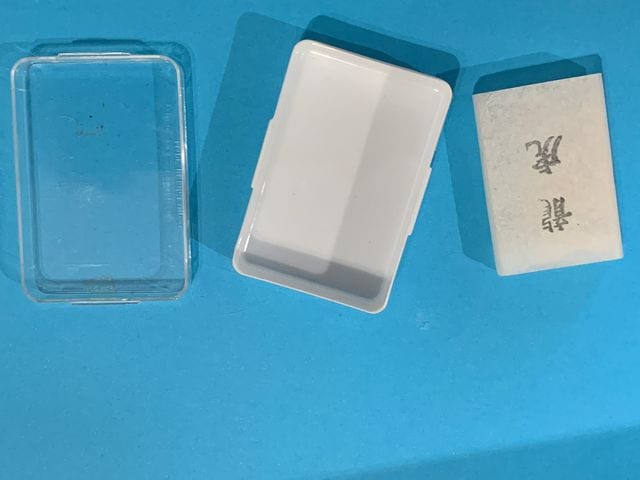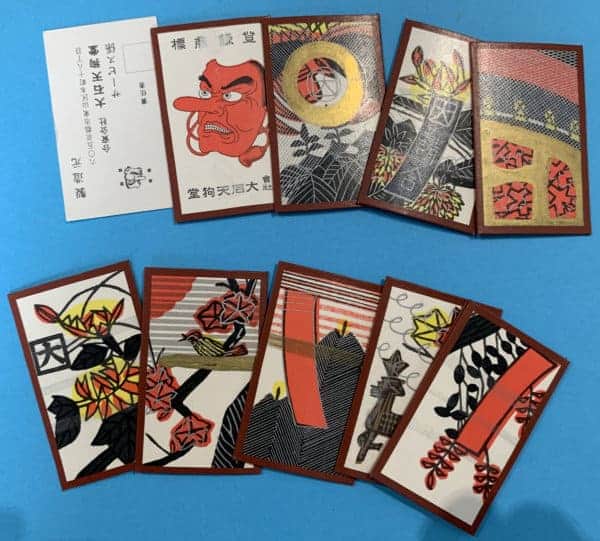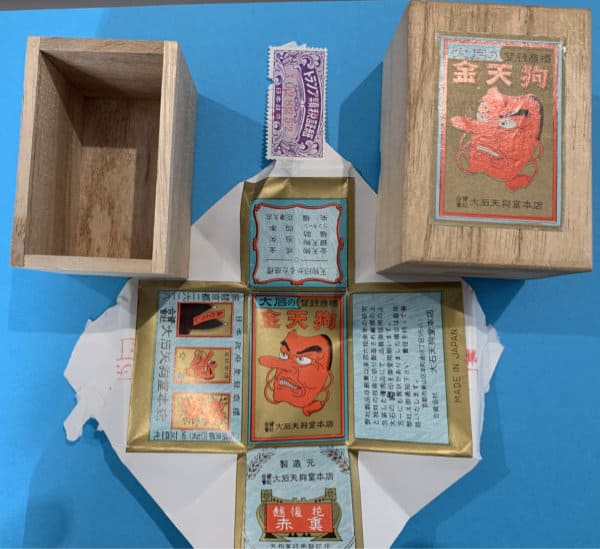
Rest of the World Playing Cards
Fashion Plate Playing Cards - single figure playing cards c1850
The characters appear in elegant costumes - Victorian era.
The Jacks are evidently the workers in the households of the Man and Woman in each suit respectively.
The courts have lightly engraved backgrounds.
The Aces pips are surrounded by line drawn ornamental surrounds.
Engraved - Hand Coloured - stencilled pips.
These were made by Le Cameleon in Paris c1850
Backs BLUE
Complete 52/52 - no box
There are marks on the edges of the cards and whilst the stock is fine condition, no tears and no bends, there is random dirty marks that do distract from the cards.
Backs vary in shades of Blue
CLICK ANY IMAGE FOR A LARGER IMPRESSION
Edo iroha karuta Japanese Poem Card Game
Edo iroha karuta is a card game which uses a deck composed of cards based on the Hyakunin Isshu (one hundred Japanese waka by one hundred poets).
The box is late 20th Century and, despite it’s good looks, is plastic – this is a heavy item.
The card can be lifted out of the box with a inner section that is lifted out by means of a tassle.
Translation of the cards can be found on
https://www.japanya.co.uk/karuta.aspx
The main box comes with an attached red tassel.
All in good order and an attractive table item.
I am grateful to Jeff Hopewell
for his correction to my original description
Postage at cost
CLICK ANY IMAGE FOR A LARGER IMPRESSION
Karuta Japanese Card Game - 100 cards
50 ‘poems’ and 50 ‘illustrated cards’
This is a 20th Century boxed set of 50 cards with poems and 50 with illustrations for the game of Karuta.
[ Cards are different from the green boxed game listed on this page ]
Karuta is a memory/grabbing game!
Thes is a red boxed game with full instructions – in Japanese.
Near mint condition – one set of illustration opened for scanning.
CLICK ANY IMAGE FOR A LARGER IMPRESSION
Kamigata iroha karuta Japanese Card Game - 100 cards
50 ‘poems’ and 50 ‘illustrated cards’
This is a 20th Century boxed set of 50 cards with poems and 50 with illustrations for the game of Karuta.
[ Cards are different from the red boxed game listed on this page ]
Karuta is a memory/grabbing game!
Thes is a green boxed game with full instructions – in Japanese.
Near mint condition – one set of illustration opened for scanning.
I am grateful to Jeff Hopewell
for his correction to my original description
CLICK ANY IMAGE FOR A LARGER IMPRESSION
Highly Coloured Box of 120 [ complete ]
SQUARE Dasavatara Indian Playing Cards
References
Ganjifa - the traditional playing cards of India by Jeff Hopewell
IPCS Papers No: 6 September 2010. ISSN 0305-2133
Indische Spielkarten - Deutsche Spielkarten-Museum - Rudolf von Leyden
Leinfelden-Echterdingen 1977
Postage at cost
CLICK ANY IMAGE FOR A LARGER IMPRESSION
Hand Painted Indian Expanded Dasavatara
Playing Cards- 144 cards
References
Ganjifa - the traditional playing cards of India by Jeff Hopewell
IPCS Papers No: 6 September 2010. ISSN 0305-2133
Indische Spielkarten - Deutsche Spielkarten-Museum - Rudolf von Leyden
Leinfelden-Echterdingen 1977
Postage at cost
CLICK ANY IMAGE FOR A LARGER IMPRESSION
Hand Painted Indian Expanded Dasavatara
Playing Cards- 240 cards
References
Ganjifa - the traditional playing cards of India by Jeff Hopewell
IPCS Papers No: 6 September 2010. ISSN 0305-2133
Indische Spielkarten - Deutsche Spielkarten-Museum - Rudolf von Leyden
Leinfelden-Echterdingen 1977
CLICK ANY IMAGE FOR A LARGER IMPRESSION
Trumps “Smoke and Chew Long Cut” Tobacco Insert Playing Cards
CLICK ANY IMAGE FOR A LARGER IMPRESSION
Mademoiselle from Armentières - Woolly Whale – Playing Cards
One of my favourite ‘saucy’ packs featuring buxom ladies as Queens.
From the Press of the Woolly Whale, New York in 1933
Designed by Alban B. Butler, Jr. (1891-1949).
Full Mint Deck 52 Playing Cards + Joker and a blank card.
88×57 mm, round corners, gilt edge.
Backs: Shoulder badge of the 26th (Yankee) Division, blue on grey background.
Maker’s name on Ace of Spades.
Complete with Descriptive Wrapper – opened to scan cards.
US tax stamp 1929-1940,on wrapper, cancelled by hand
The pack is dedicated to the 103rd Field Artillery Regiment, 26th Division, which was then Cary’s unit.
Kings and jacks are soldiers in different ranks from private to major-general while the queens illustrate the famous Mademoiselle from the song (Mademoiselle from Armentiers, Parlez-vous…)
CLICK ANY IMAGE FOR A LARGER IMPRESSION
HIKIFUDA - set of six cards by Oishi Tengudo
First Class / Air Mail Postage: to UK – £4.45 / to Europe – £8.00 / to Other £10.95 Insurance is an additional £5.00 to any Country for the first £250.00 We combine postage and only charge our costs.
2002 Unique Playing Cards capturing hand movements and faces.
The Unique Playing Cards deck has been designed by Ian Roth, a New York- based artist and filmmaker. Court cards feature portraits of eclectic New Yorkers created by various scanning techniques.
Human hands represent the value of each suit card using different digit combinations.
As new.
First Class / Air Mail Postage: to UK – £4.45 / to Europe – £8.00 / to Other £10.95 Insurance is an additional £5.00 to any Country for the first £250.00 We combine postage and only charge our costs.
Singer Sewing Machine Insert Playing Cards
Ladies in costume.
Singer’s Sewing Machine Insert Cards, circa 1898,
Advertising gimmick by the Singer Sewing Machine emulating the successful
campaigns by the Tobacco Companies
A set of 52 cards with young ladies in costume
A miniature playing card appears in the upper left and lower right of each pip card.
The courts cards have the suit mark and title, king, queen or knave
The backs have the inscription
“The Favorite and USEFUL THING in the world is
SINGER’S SEWING MACHINE.”
It is believed that one card was given with each spool of thread.
Cards measure 6.8cm by 3.6cm
The cards are not to be found in the American catalogues
and we believe this set to be very rare.
There are minor imperfections that can be seen from the
extensive photos
POSTAGE AT COST
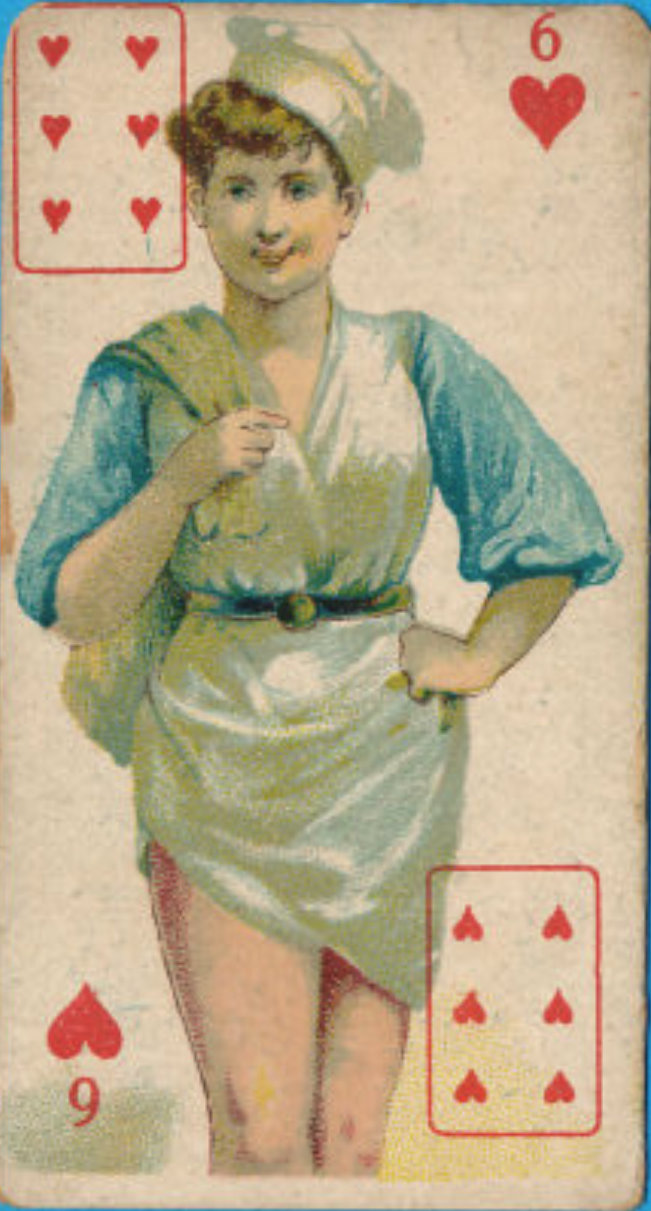

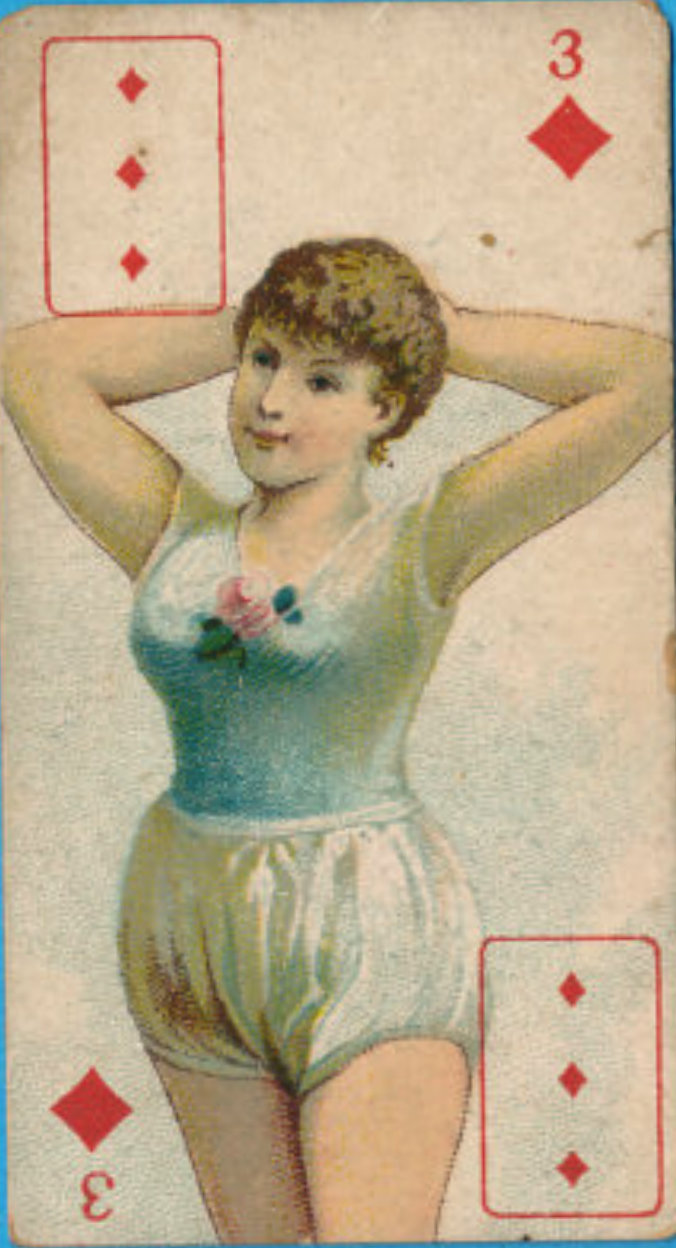
CLICK ANY IMAGE FOR A LARGER IMPRESSION
Nintendo “Laser Clay” Playing Cards, c.1973
Non-standard deck by Nintendo c.1973 to promote its own Laser Clay Shooting System, with backs relating to the product.
Interesting court cards and unusual pip cards
The deck has 52 suited cards, plus 2 Jokers. The cards are long, measuring 100mm x 58mm, and come in the original Nintendo plastic box.
The cards are as new
First Class / Air Mail Postage: to UK – £4.45 / to Europe – £8.00 / to Other £10.95 Insurance is an additional £5.00 to any Country for the first £250.00 We combine postage and only charge our costs.
CLICK ANY IMAGE FOR A LARGER IMPRESSION
Kabufuda, literally meaning "Kabu cards"
Black is the only colour extensively used, with a few details in red. Only “special” subjects also have silver and gold.
The ace features a highly stylized black oval shape, with a geometric texture in the background.
The “special” cards of the fourth series are only two: an ace and a 4.
First Class / Air Mail Postage: to UK – £4.45 / to Europe – £8.00 / to Other £10.95 Insurance is an additional £5.00 to any Country for the first £250.00 We combine postage and only charge our costs.
UNSUN KARUTA Playing Cards - A Japanese Game
Another local deck was created in the second half of the 17th century, called Unsun Karuta after the name of two special court cards
It was strongly inspired by the original Portoguese card scheme, basically repeating the Tenshô Karuta, yet introducing a new suit, more court cards and joker cards too.
The Unsun Karuta deck is made of seventy-five cards, divided into five suits, four of which were borrowed directly from the Portoguese ones; the suit of Hau or Pau (Batons) features sticks from which wigs, leaves and flowers (or berries) spring, similar to the ones most patterns of Hispanic origin still now have: for this reason this suit is also known as Hana (“Flowers”). And in both the suits of Hau and Isu (Batons and Swords), the respective pips cross each other in a fashion typical of the early Portuguese pattern.
The fifth suit, instead, is non-standard; it is called Guru (“round, around”), and it features comma-shaped strokes arranged in a circular pattern, almost forming a whirl.
This c1981 Reproduction by the Waylands is a well produced product
First Class / Air Mail Postage: to UK – £4.45 / to Europe – £8.00 / to Other £10.95 Insurance is an additional £5.00 to any Country for the first £250.00 We combine postage and only charge our costs.
Defiance playing cards, Toronto: The Copp, Clark Co. Ltd., c.1885
Fifty-four colour-printed cards (complete), together with orig. printed wrapper (faded)
Double end court cards plus joker and second Ace of Spades and a great Joker.
Cards have patterned of blue daisies. Cards are printed on inferior card stock and are near mint, minor colour offset on two cards, pictures.
Hochmann CDN38
First Class / Air Mail Postage: to UK – £4.45 / to Europe – £8.00 / to Other £10.95 Insurance is an additional £5.00 to any Country for the first £250.00 We combine postage and only charge our costs.
CLICK ANY IMAGE FOR A LARGER IMPRESSION
20th Century Japanese Hanafuda Playing Cards - Komaru
These are KABU cards – Single Suited Pattern
This is the Komaru pattern – using the suit of ORU
Cards are MINT – outer paper packaging opened – contained in usual outer Plastic housing.
First Class / Air Mail Postage: to UK – £4.45 / to Europe – £8.00 / to Other £10.95 Insurance is an additional £5.00 to any Country for the first £250.00 We combine postage and only charge our costs.
CLICK ANY IMAGE FOR A LARGER IMPRESSION
Ganjifa Indian Playing Cards - Unusual French Suited
c Third Quarter of the 20th Century – this is a complete deck of 52 round cards.
They are hand painted on paper mache with a glazed finish.
Standard French Suited Playing cards – Four suits of 13 cards. These were made for the export markets.
Presented in a wooden box – painted on all six sides – sliding lid to cards.
The cards are in very fine condition.
HEAVY ITEM - POSTAGE WILL BE CHARGED AT COST
Postage at cost
CLICK ANY IMAGE FOR A LARGER IMPRESSION
Ganjifa Indian Playing Cards - Indian Bazaar Cards - 192 cards
c Third Quarter of the 20th Century – this is a complete deck of 192 round cards.
They are hand painted on paper mache with a Laquered finish.
There are Sixteen Suits with Twelve cards in each suit.
There is plenty of information on these cards to be found on the Internet.
The cards are in very fine condition and are housed in a hand made box.
HEAVY ITEM - POSTAGE WILL BE CHARGED AT COST
Postage at cost
CLICK ANY IMAGE FOR A LARGER IMPRESSION
SOLD ITEMS
This is a set of 52 Playing Cards [ No Joker ] mixed from two series of the 1890s
So whilst all fronts of the Playing Cards are different the backs are from two series, both blue.
[1] One has the traditional back with the central cartouche featuring that sturdy Seaman at the wheel, inscribed “Smoke and Chew” and “Hard-A-Port Cut Plug”.
[2] The other with the same background but the cartouche reading – “Hard A Port Cut Plug – Moore & Calvi” and “Wake Up Cut Plug / Trumps Long Cut”
All face cards are inscribed “Hard A Port Cut Plug” on the bottom left hand corner”
The cards were made by [1] Maclin-Zimmer-McGill [ Successors to Moore and Calvi ] and [2] Moore & Calvi, Linder, Eddy & Clauss, Lith NY
All fronts are scanned.
The cards have been played with but are not dirty or damaged slight discolouration on Ace of Spades – we would grade them 6.5/10
First Class / Air Mail Postage: to UK – £4.45 / to Europe – £8.00 / to Other £10.95 Insurance is an additional £5.00 to any Country for the first £250.00 We combine postage and only charge our costs.
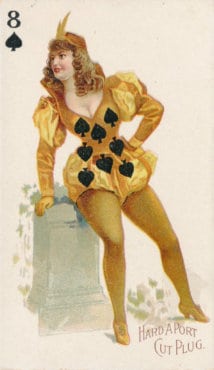
REF: RB_RROW-004
HARIFUDA - set of six cards by Oishi Tengudo
First Class / Air Mail Postage: to UK – £4.45 / to Europe – £8.00 / to Other £10.95 Insurance is an additional £5.00 to any Country for the first £250.00 We combine postage and only charge our costs.
Oishi Tengudo Japanese Playing Cards Game
CLICK ANY IMAGE FOR A LARGER IMPRESSION
This site is owned by – TSSDA © Games et al 1999 – 2025 – Zen
